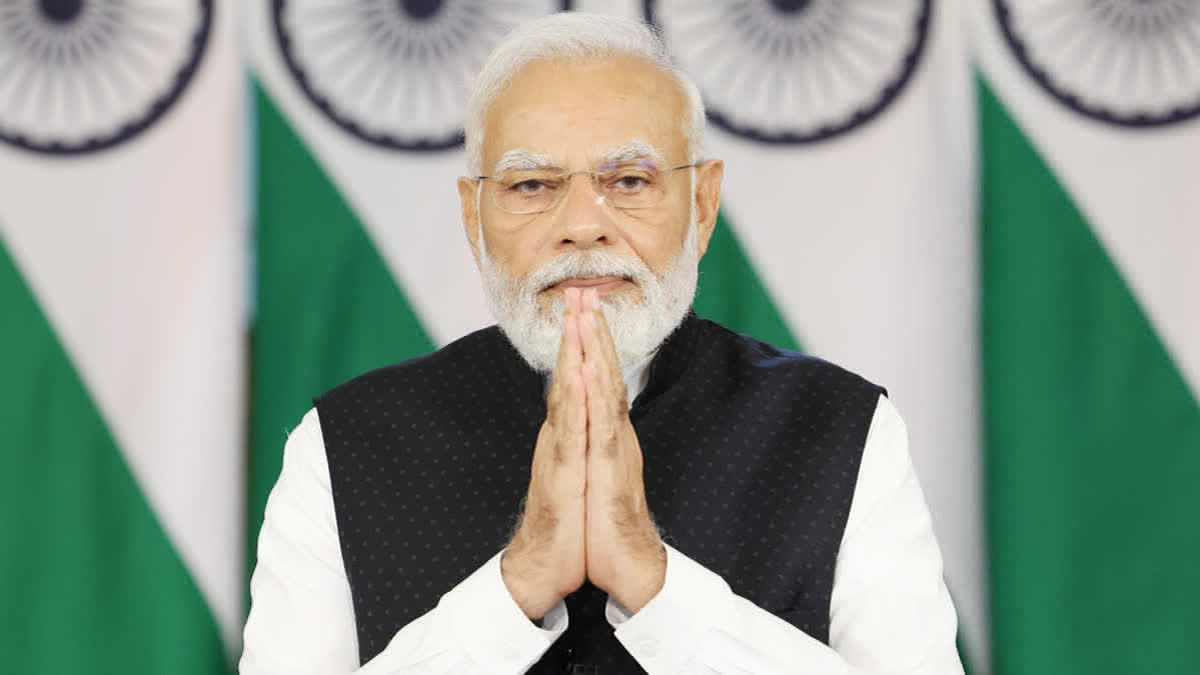Hyderabad: Prime Minister Narendra Modi is set to embark on an official state visit to the United States from June 21 to 24, during which he will be received by US President Joe Biden at the White House. This visit holds great significance as it marks Modi's first state visit to the US since assuming office as prime minister nine years ago.
The last state visit by an Indian leader to the US took place in 2009 when then Prime Minister Manmohan Singh visited from November 23 to 25. While Modi has visited the US on multiple occasions throughout his tenure, this particular visit is categorized as a state visit, which holds the highest rank in diplomatic protocol.
But what exactly are state visits and why are they important?
State visits are formal visits to foreign countries led by a head of state or government, acting in their sovereign capacity. These visits are officially described as a "visit of (name of state)" rather than a "visit of (name of leader)." In the case of state visits to the US, they only occur upon the invitation of the US President, who acts as the head of state. These visits typically last for a few days and involve a series of elaborate ceremonies tailored to the schedule of the visiting head of state.
During a state visit to the US, various ceremonial events take place, including a flight line ceremony where the visiting head of state is welcomed upon arrival, a 21-gun salute White House arrival ceremony, a White House dinner, the exchange of diplomatic gifts, an invitation to stay at the Blair House (the US President's guesthouse), and flag street lining. These ceremonies serve to honour and acknowledge the visiting leader, while also emphasizing the importance of the bilateral relationship between the two countries.
It is essential to note that not every visit by a foreign leader is classified as a state visit. State visits are the highest-ranked category of foreign visits and hold immense ceremonial importance. They are considered the epitome of friendly bilateral relations and are relatively rare to maintain their prestige and symbolic status. According to US diplomatic policy, the president can host no more than one leader from any nation once every four years, further highlighting the exceptional nature of state visits.
Other categories of visits, in descending order of magnitude according to US diplomatic policy, include official visits, official working visits, working visits, guest-of-government visits, and private visits. Each category follows different protocols and has varying levels of significance. While state visits are deemed the most prestigious, it is important to recognize that the classification of the visit itself does not solely determine the success of diplomatic endeavours.
In reality, the actual diplomatic work and progress in fostering a healthy relationship with another country can be achieved through various types of visits. Working visits, for example, can be equally productive in advancing bilateral ties and achieving diplomatic goals. Due to the rarity and ceremonial nature of state visits, most substantive work and discussions often take place during other types of visits, where leaders can engage in more focused and productive discussions without the constraints of formalities.
In the case of Prime Minister Narendra Modi's upcoming state visit to the US, while the ceremonial aspects will undoubtedly be significant, the true value lies in the opportunity for both leaders to engage in meaningful discussions, strengthen bilateral ties, address shared challenges, and explore avenues for cooperation in various fields such as trade, defence, climate change, and technology.
State visits, with their grandeur and ceremonial traditions, offer a platform for leaders to showcase the importance they place on bilateral relations and to symbolically reinforce the bond between nations. They serve as a reminder of the shared values and interests that underpin diplomatic relations, and they create opportunities for leaders to build personal rapport and trust.



